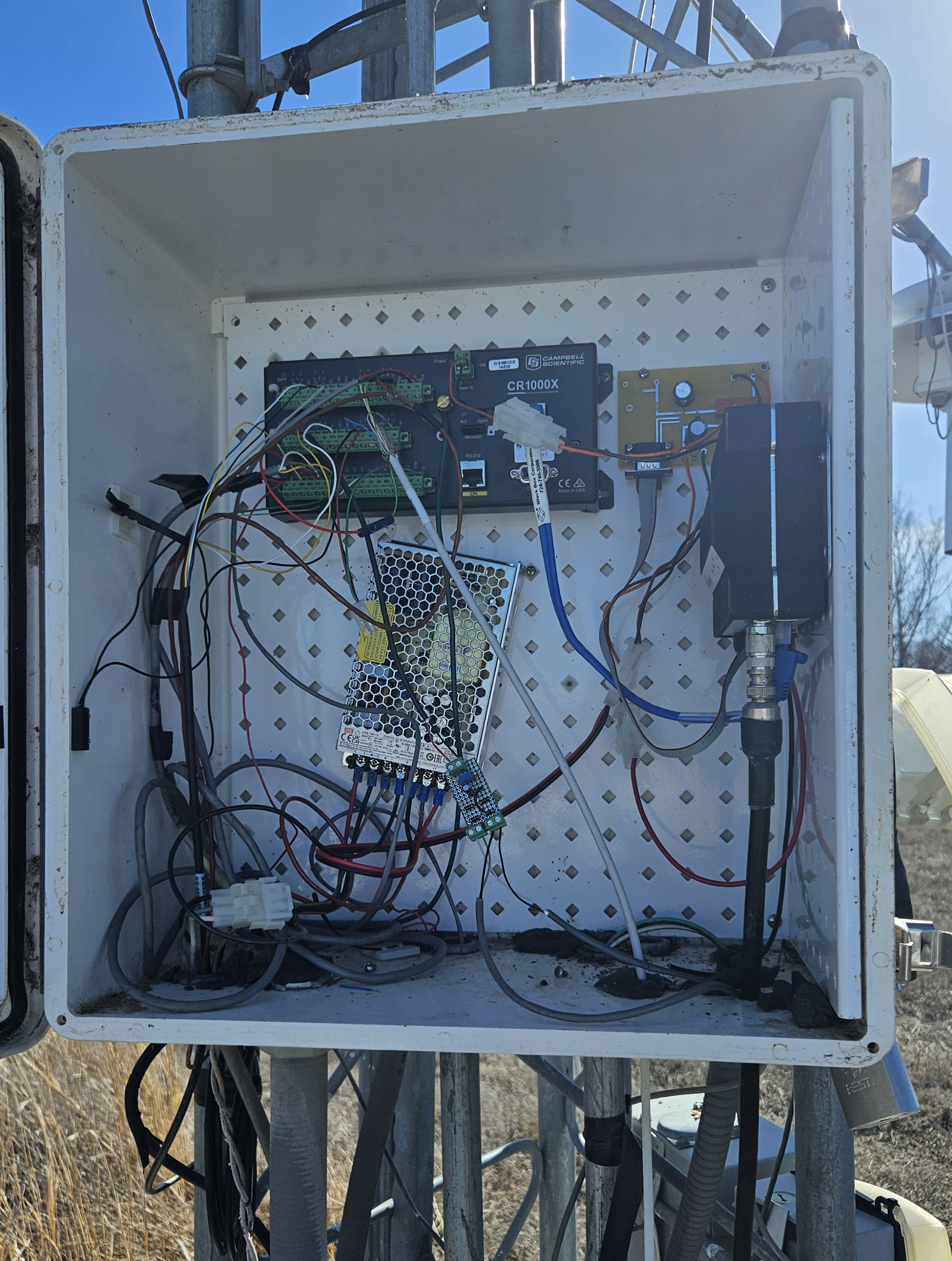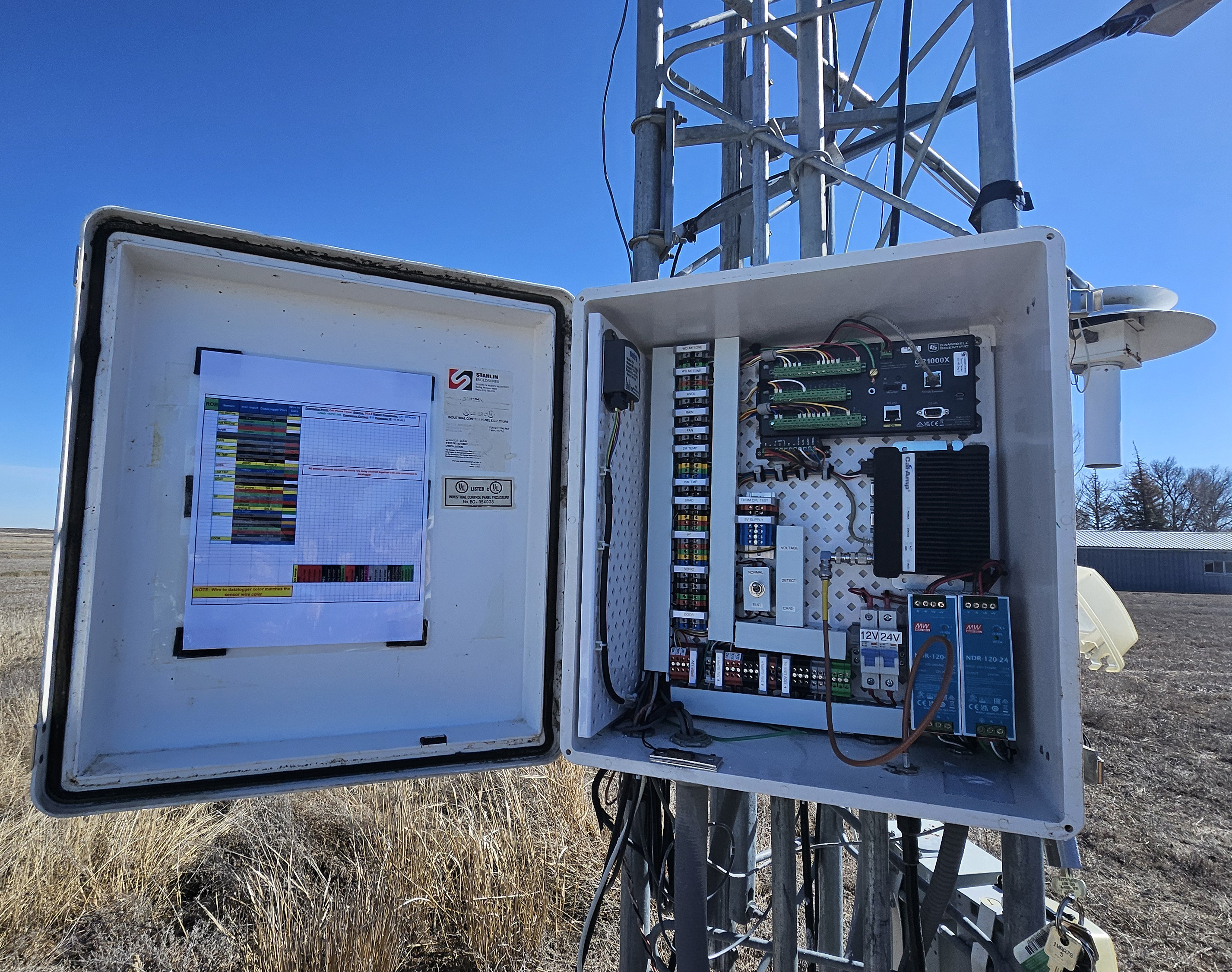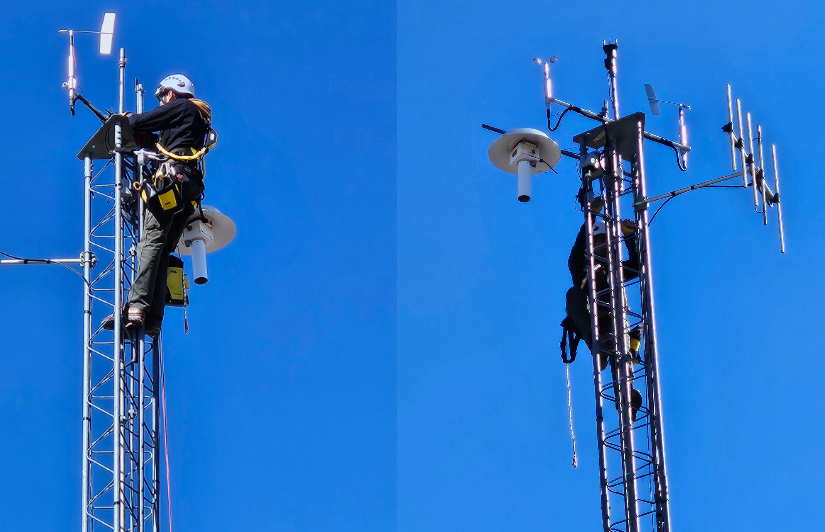Testing New Sensors and Designing New Solutions
The Air Resources Laboratory’s office in Idaho Falls supports the Department of Energy Idaho National Laboratory with meteorological measurements, mesoscale modeling and forecasts, and atmospheric dispersion. As part of that, ARL supports improved weather predictions and warnings for the entire region with 34 weather stations that collect weather data. This data is used by NOAA Federal meteorologists to forecast conditions for the Idaho National Laboratory site. These sites have been up for more than 30 years and serve a crucial role in our support for the Idaho National Laboratory. These weather stations typically gather wind data using a mechanical sensor. However, ARL has begun testing a new sonic anemometer, which determines wind speed by measuring sound waves, alongside the old sensor. This will allow scientists to compare the wind data from both sensors to ensure that the new sensor collects data better or with very similar accuracy. With this new setup to test the sonic anemometers in two sites, ARL Technician Mathew Corbett took the opportunity to upgrade and redesign the boxes that house the electrical and data collection efforts. These boxes have not had any significant modification since first installed at each station and are a mess of convoluted wires as seen below.


In contrast, the new boxes have been neatly organized and upgraded to better use the space and make it easy to see where everything leads.
This image shows Xavier Hoskins, who also did the programming for these new boxes, before and after installing the sonic anemometer at the Roberts, ID site on March 18, 2024.

Additionally, the new sonic sensors will simplify the twice-yearly maintenance and reduce the time spent climbing the tower.

